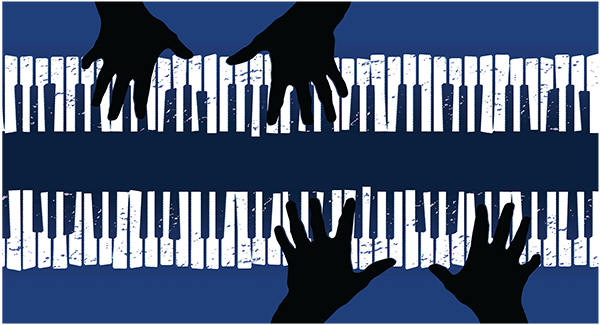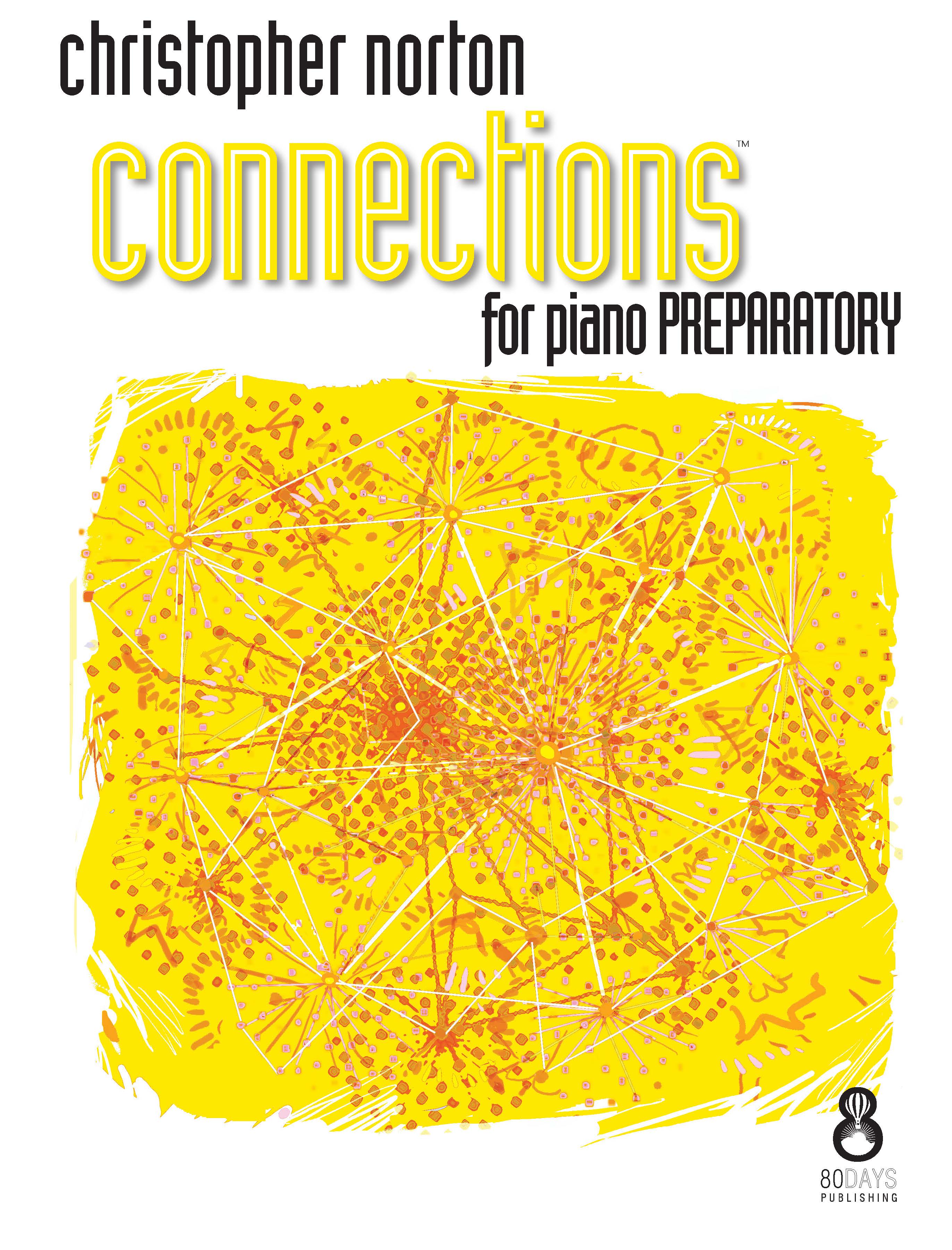
I recently had the pleasure of chatting with established composer and pedagogue Christopher Norton about his recently released new additions to Connections for Piano. The original Connections for Piano series span ten levels from elementary to advanced and contains over 200 pieces. This latest addition of books includes Connections for Piano Preparatory (this fits in pre-level 1 of the original books), Connections for Piano Preparatory Duets, Connections for Piano Duet Books 1 & 2 and Connections for Piano Teacher Accompaniments 1-3 (to accompany the original student books).
The new Teacher Accompaniment books are a fun addition that align with the previously released books. There is so much diversity in genres for students to choose from and these accompaniments would be great for performances. The pieces within each level are not sequential, each book is not necessarily designed to be played front to back in order. With my students I will cherry-pick songs to help diversify their repertoire and genres beyond the standard sequential books.
The standouts of this new range are the Duet books. These all-new releases provide excellent opportunities for students to develop ensemble skills which can be a bit more difficult to come by on piano. In our interview, Chris said that the levelling between the parts is intentionally similar, so that students at the same level can play together.
The Connections series is intentionally structured and designed for students. Do you have a different approach when composing music particularly for students/teaching?
I’m obviously aware of the parameters and how far you can go in each grade. The interesting thing about Connections is that I wrote it for the examination board in Canada, the Royal Conservatory, but I didn’t write the books in sequence. I wrote 200 pieces over 200 days, writing just what I felt like – one day a hard piece, another day an easy one. I find it slightly constraining to work my way through only Grade 1 pieces, so I wrote a whole lot of pieces and someone figured out afterwards what the grading was.
There are pieces from numerous genres in these books. Do you find it difficult to move between genres whilst composing?
No, because I’ve played in such a variety of contexts. In New Zealand I played in a Christian rock band, in Britain I played in a James Brown and funk-inspired rock band with a brass section and I’ve played in Jazz ensembles. I’ve always sort of roved about, I liked pop music and I liked Jazz and I liked rock, so I had a huge range of influences. When I sit down, I don’t know what I’m going to come up with until I start to write.
As a teacher yourself, how important is it to you that students are exposed to a wide variety of repertoire?
In Connections, I do have pieces which you might almost call Classical, what I’ve tried to do is cover styles which might appeal to students who like Chopin, Grieg or Ravel. I’ve always thought it’s good to expose students to things, but I like to ask students what they want to play, what do they listen to and start from there. Things I think are important are piano technique, so they can get around the piano, being able to read fluently and to be able to play from chords. All my work has backing tracks and MIDI files, so you learn the piece and you can then deconstruct it and then play only the chords from the piece. The material in Connections suits students who only want to read, as well as those who only want to play chords.
The Connections series first started in 2007. What is it about this series of books which inspires you to keep adding to it?
Someone said to me recently that I write good tunes, so they lend themselves quite readily to arrangements for other instruments. If you’ve got strong enough melody lines and good harmonies, you can expand the series that sort of way.
What do you see as the benefits for students to play piano duets?
It’s a social thing for a start, getting to play with somebody else. The levelling is about the same for each part, so two students of a similar level can play together. It’s good for developing ensemble skills, good for sight reading, getting used to balancing because when you’re playing by yourself, you’re balancing your left and right hand, but this is balancing a whole part against another whole part. There are so many things we get from playing music together.
For the woodwind teachers out there (I also teach saxophone), I asked Chris during the interview if there was any possibility of the books being adapted for saxophone and was excited when he told me the woodwind arrangements were coming soon! On any instrument, these books would be welcome materials for students who want to explore a variety of genres, and as resources for teachers looking to add more connection in their studio.

Owen Selby is a piano and saxophone teacher based in Adelaide, and is studying to become a classroom music teacher. He is passionate about making music accessible to everyone, and promoting the benefits music education provides students.






